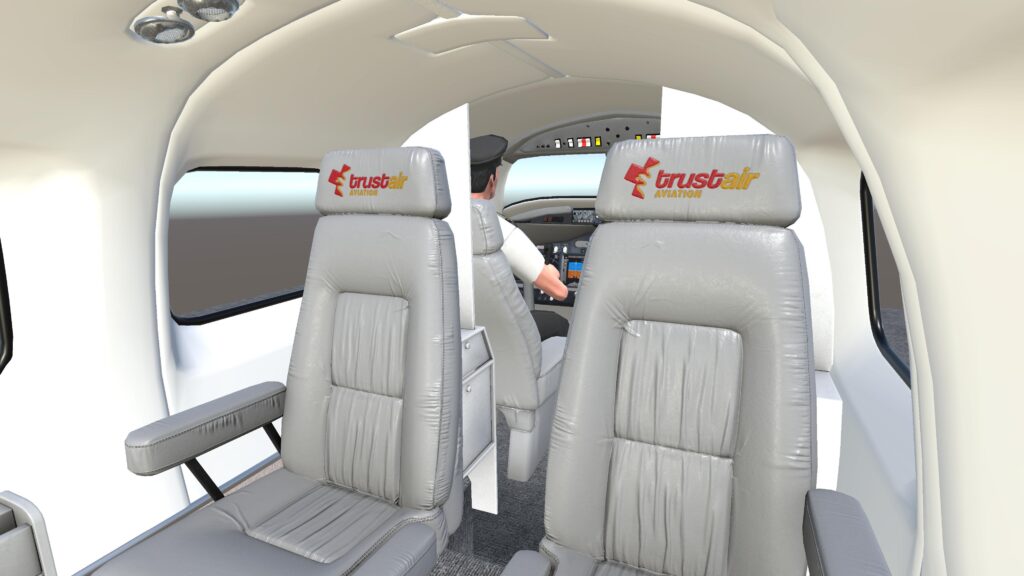Trustair - Medical VR training with AI assistant
Simulation of emergency situations on the board of an Ambulance Aircraft.
Tasks
3D MODELLING AND ANIMATION
Modelling and animating the Aircraft, the patience and the medical equipments
CHAT GPT INTEGRATION
Open AI's Chat GPT API integration and "teaching" to certain situations
PROGRAMING
Programing the emergency situations and the needed remedial actions
AIR AMBULANCE TRAINING IN VR
Trustair - Medical VR training with AI assistant
The goal of the VR training application – that we developed in collaboration with Trustair Aviation – is to prepare beginner medics/doctors for providing medical care in the air (under special circumstances) using the medical equipment on a special ambulance aircraft.
The main goal of the multi-stage development – as part of a continuous medical training program – is to improve patient safety through innovative tools.
Once the user puts on the VR headset, they find themselves in a photorealistic 3D virtual environment, that is made even more realistic by environmental noises (airplane engine, medical equipment sounds, etc.). At the beginning of the simulation, the trainee can explore the airplane, get to know the medical equipment on board, and ask questions to the AI assistant, BOB, about the plane, the equipment, or anything else.
After selecting the “start” option, the simulation begins.
At the start, the vital signs of the intubated patient are stable and within normal limits, but shortly thereafter – with random timing and symptoms – the patient enters a critical condition.
The doctor undergoing the training must first identify the problem by examining the patient’s physical symptoms and checking the equipments, and solve it as quickly as possible.
The situation is further complicated by the fact that the narrow cabin of the airplane allows limited movement, which is well simulated by the VR solution: if the doctor were to stand up beyond the boundaries of the virtual cabin, a strong sound effect would alert to the “error,” and from then on, they would only be able to see limitedly inside the cabin until they lean back inside the virtual cabin contours. Thanks to VR technology, while the new colleague tries themselves out in real-life situations, they can prepare for critical situations through a wide variety of scenarios – with unlimited practice time, without using the scarce available resources.
We continuously develop the system by integrating more complex emergency situations. Later on, it will be possible to track the evaluation/development of individual users – by requesting user data before the start of the simulation- , measuring the time spent on tasks performed in the VR space, and their success rate.
CLIENT
Trustair Aviation
DATE
February 2023
TECHNOLOGY
Virtual Reality + Artificial Intelligence
PLATFORM
Unity, Oculus Quest 2


